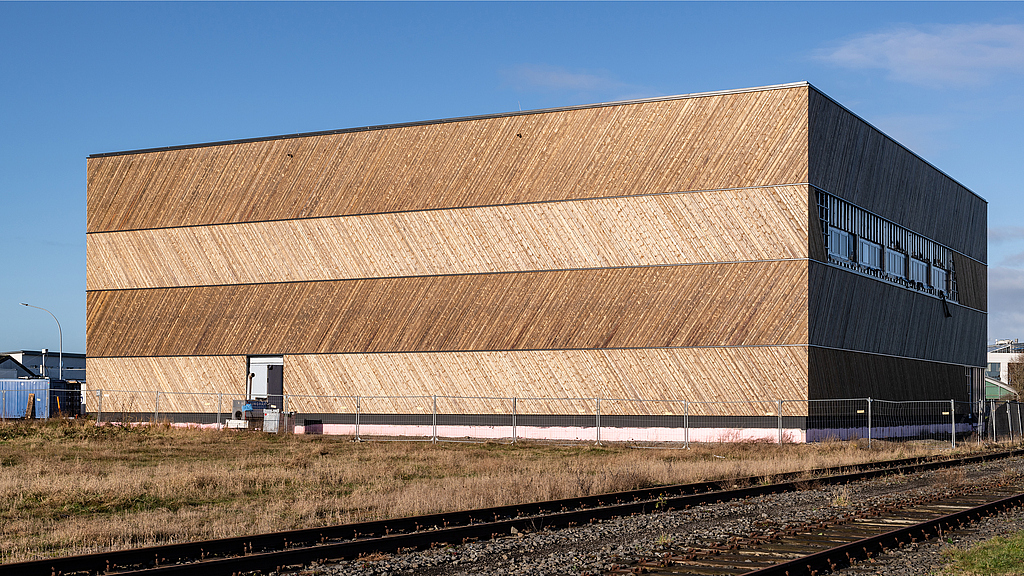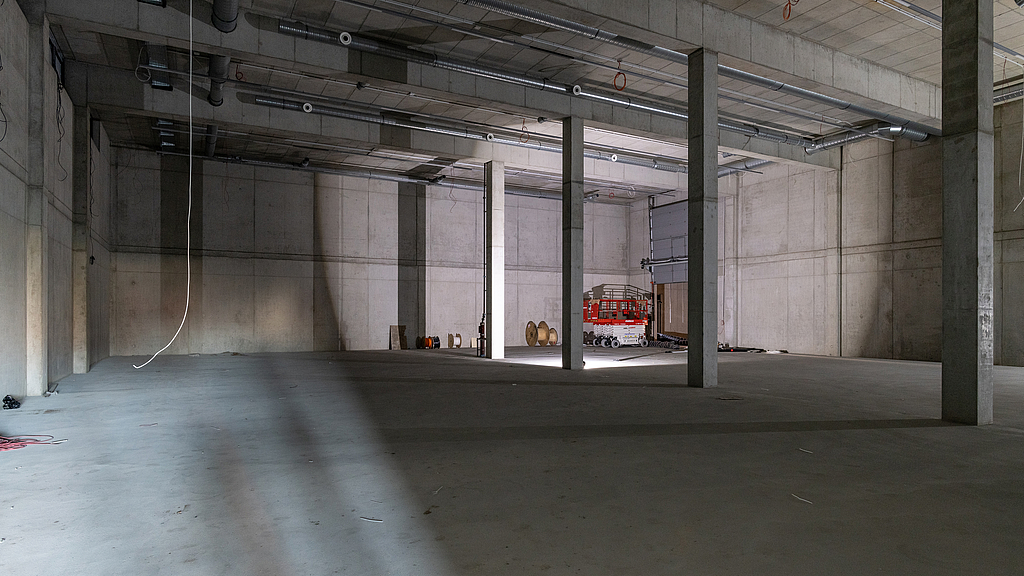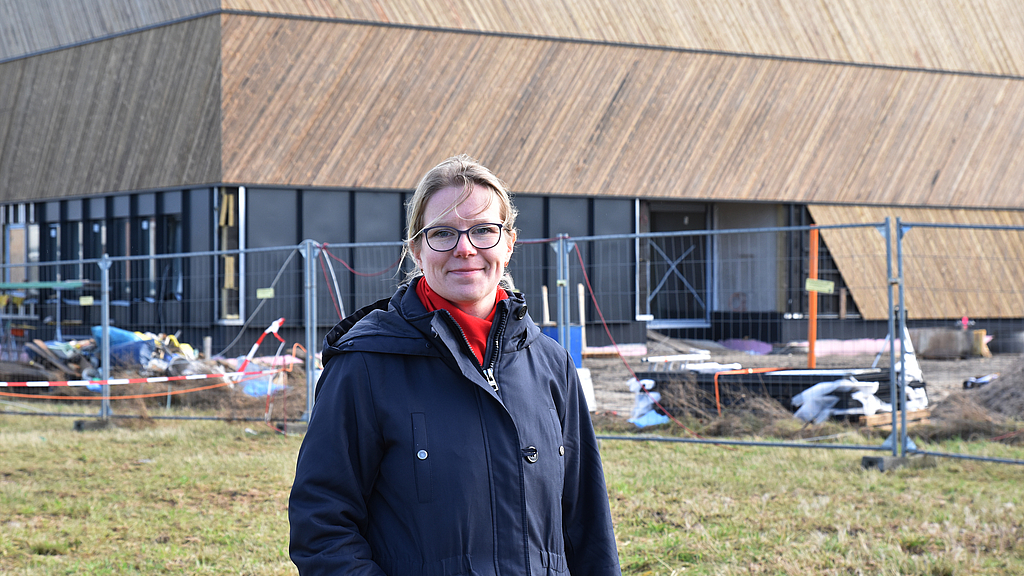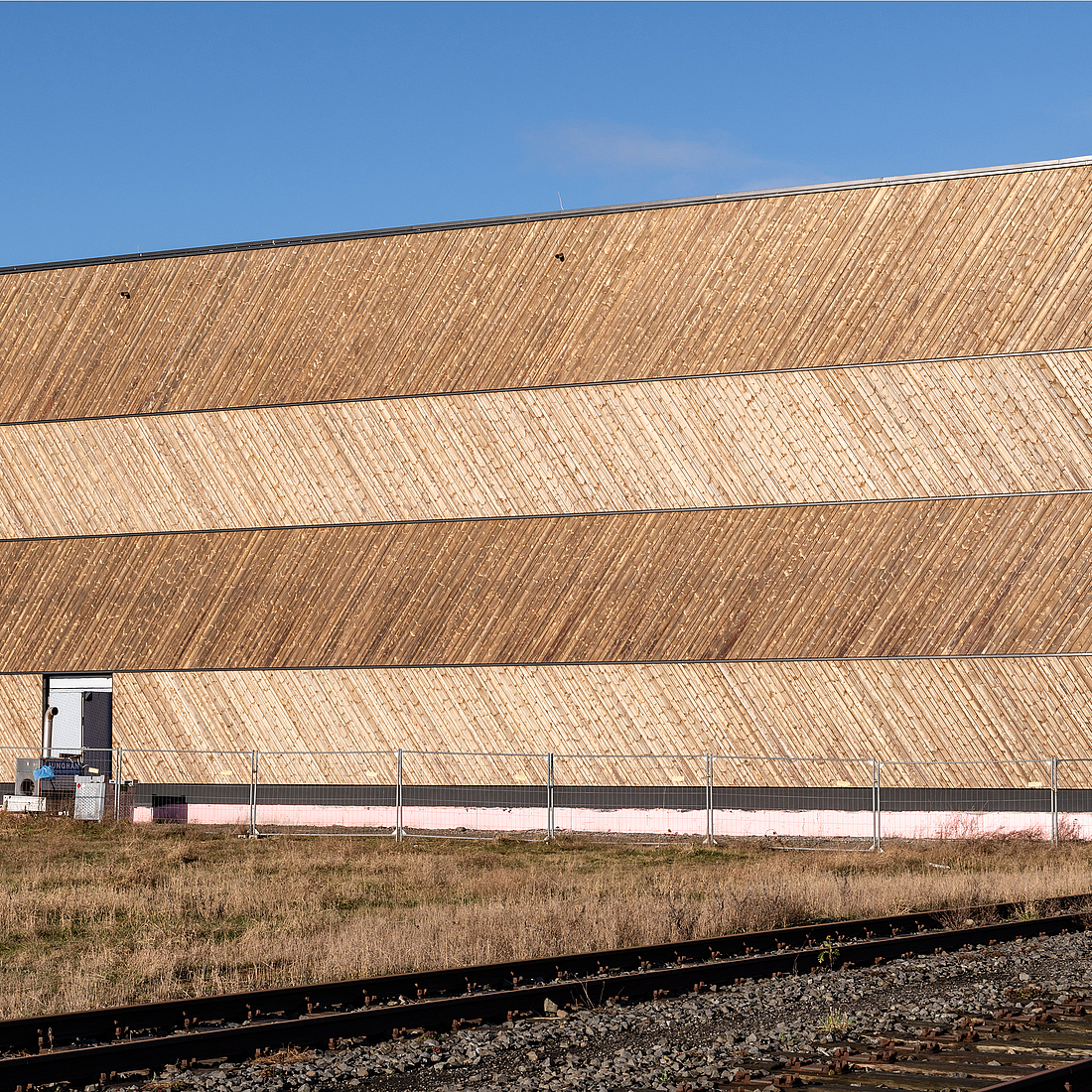Research depot is about to be occupied
A windowless building with a plank look rises up to the sky behind the Bremerhaven fishing port. Inside, darkness envelops the visitors. Not a bright outlook for a residential building, but the best conditions for museum objects: Museologist Annika Opitz is enthusiastic about the new research depot. It will be the home for exhibits, objects and archives. The move-in will start in spring after a one-and-a-half-year construction phase.
Cables are still hanging here and there, and the large shelves that turn the hall and the rooms into depots are missing. But it can be guessed: A lot will fit into the approximately 2,300 square meters of storage space at Eichstrasse 13. Despite the size, museologist Annika Opitz is always calculating - what fits best where? After all, the collection for the German Maritime Museum (DSM) / Leibniz Institute for Maritime History comprises 380,000 archival records and 60,000 museum objects of various sizes. From XXL to tiny everything is there, the sailing rescue boat GEHEIMRAT HEINRICH GERLACH belongs to the giants, the uniform buttons are the smallest specialities. They are joined by figureheads, table services, ship models, rigging, paintings, goblets, silver, navigation instruments and much more. There is so much that Opitz finds it impossible to name a favorite. "For me, the collection as a whole is unique and special. That's why it's very important to me that all the objects are preserved in perpetuity. The research depot gives us the unique opportunity to store our collection under optimal conditions in terms of conservation."
The new building offers perfect conditions in modern standards. The large hall and the depot rooms above it are dark, have a constant climate between 17 and 22 degrees, and a relative humidity of 40 to 60 percent. In this way, the exhibits remain optimally protected from UV light, temperature fluctuations, environmental influences and dust. Incidentally, this is already the case from the time of delivery, as transporters will soon be able to drive directly into the interior of the building via an airlock. Sensitive slides, glass plates and photographs will find a protected environment in the new cooling chamber. The archive is moving into spacious rooms that will make new projects possible: "The additional space will allow the archive to expand and develop its holdings," says Opitz. In addition to the collection infrastructure, the 3D Capture team is moving into the building and will capture objects three-dimensionally on site so they can also be explored in the museum and on the website.
The key advantage at the future research depot is that it will allow students and researchers to view exhibits for research live in the study zone. For Opitz, these are fantastic conditions for being close to the pulse of history. On special occasions, the expert promises, the public will also be able to take a look inside the depot.
But first, moving, unpacking and systematic sorting are on the agenda. Starting in the spring, trucks will be rolling in with thousands of boxes from the interim depots. The clearing out will certainly take until the end of the year. Opitz, a native of Bremen who visited the DSM as a child, will keep a watchful eye on the collection: "It's a matter of recording the collection, caring for it, checking the climatic conditions, and carefully examining it for anomalies and changes. There's no way we're going to run out of work."
For Opitz, when the first trucks pass through the lock, it doesn't mark the end of a long journey, but rather a stopover. In 2015, there were the first considerations for a research depot, and in November 2019, the foundation stone was laid. Since the museologist has been working at the DSM, she has accompanied the project - from the first feasibility study to the move-in. Nevertheless, her thoughts are already turning to the future: the collection is growing and Opitz hopes for an extension. "It's been an exciting journey up to this point, but it's great that I've been able and allowed to accompany it from the first floor plan to moving in."

The research depot in the fishing port. The plank look, reminiscent of the KOGGE, is striking.
Photo: DSM / Helena Grebe

The shelves are still missing: the exhibits will soon move into the hall.
Photo: DSM / Helena Grebe


